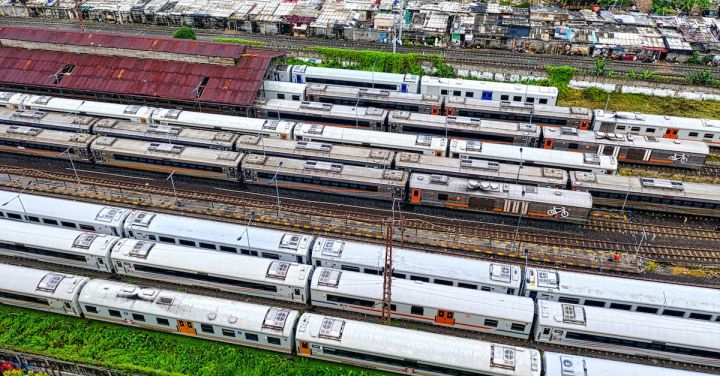High-speed trains have revolutionized the way we travel, offering a fast and efficient mode of transportation that has transformed the concept of distance. From Japan’s Shinkansen to France’s TGV, these trains have become synonymous with speed, comfort, and sustainability. In this article, we will take a closer look at high-speed trains and explore their impact on modern transportation.
High-speed trains are characterized by their ability to reach speeds exceeding 186 mph (300 km/h). They are designed with aerodynamic features that minimize air resistance, allowing them to travel at such high velocities. These trains are powered by electricity, reducing greenhouse gas emissions and making them an environmentally friendly alternative to air travel.
One of the most well-known high-speed train networks is the Shinkansen in Japan. Launched in 1964, it was the world’s first high-speed rail system. The Shinkansen not only revolutionized travel within Japan but also served as a model for high-speed train systems around the world. Known for its punctuality and reliability, the Shinkansen has become an integral part of Japanese culture.
Another notable high-speed train network is the TGV in France. The TGV, which stands for Train à Grande Vitesse, has connected major cities in France and beyond since its introduction in 1981. With its sleek design and smooth ride, the TGV has become a symbol of French engineering and innovation. It has also contributed to the development of high-speed rail networks in other countries, including Spain, Germany, and China.
High-speed trains offer numerous advantages over other modes of transportation. First and foremost, they save time. With their incredible speed, passengers can travel long distances in a fraction of the time it would take by car or traditional train. This not only improves efficiency but also enhances connectivity between cities and regions.
Furthermore, high-speed trains provide a comfortable and enjoyable travel experience. They are equipped with spacious seating, ample legroom, and amenities such as Wi-Fi and power outlets. Passengers can relax, work, or simply enjoy the scenic views outside their windows as they glide through the countryside.
In addition to their speed and comfort, high-speed trains are also more sustainable than other forms of transportation. By utilizing electricity as their power source, these trains produce zero emissions during operation. This is particularly significant considering the environmental impact of air travel and road congestion. High-speed trains help reduce carbon emissions and promote a greener future for transportation.
While high-speed trains offer numerous benefits, they also face challenges and limitations. The construction of high-speed rail infrastructure requires significant investment and planning. It involves building dedicated tracks, upgrading existing railway lines, and ensuring compatibility with different signaling systems. Additionally, high-speed trains may be limited to specific routes and may not be accessible in remote or less populated areas.
Despite these challenges, high-speed trains continue to expand and evolve. New technologies are being developed to further increase speeds and improve efficiency. Countries around the world are investing in high-speed rail networks as a sustainable and efficient mode of transportation.
In conclusion, high-speed trains have transformed the way we travel, offering speed, comfort, and sustainability. From the Shinkansen in Japan to the TGV in France, these trains have become icons of modern transportation. With their ability to connect cities and regions, high-speed trains have enhanced connectivity and improved efficiency. As we look to the future, high-speed trains will play a crucial role in creating a more sustainable and interconnected world.
